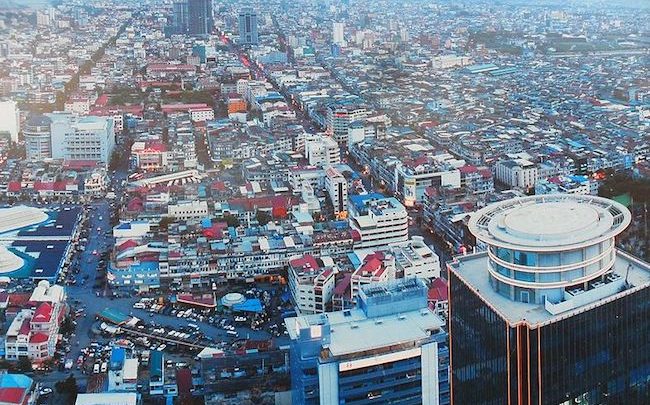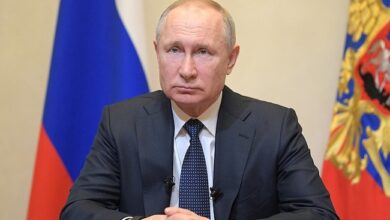
By Phil W. Reynolds
China is winning the influence war in Asia, and to understand its strategy, one only has to peer into the superpowers’ machinations in the tiny country of Cambodia. On U.S. side, foreign assistance money for programs in health, education, foodsecurity, environment, governance, and demining of unexploded ordnance totaled over $83.5 million in 2016. Since 9/11, U.S. non-military aid to Cambodia has increased from 28 million in 2001, to a high of 90 million in 2012. Direct foreign aid is small, and usually measured in the millions of dollars.
The real money is government private partnerships that make capital investments in infrastructure. The Chinese and their government backed investment funds have poured as much as 7 billion USD– that’s billion with a ‘B’ into Cambodia. To counter Chinese influence in the region, the U.S. has created the United States International Development Finance Corporation (IDFC) . The IDFC allows the President and U.S. Congress to use their bully pulpit to highlight and denounce human rights abuses, while maintaining presence, in the form of U.S. money, inthe region.
Cambodia has seen several cuts in aid since 2013 and the most recent was in response to the government outlawing the major opposition party before the 2018 general elections. The net loss to Cambodia is some 40 million dollars since the February 2018 announcement. Cambodia is not the first country, nor will it be the last, to run afoul of the U.S. emphasis on human rights. Cameroon and Myanmar, have seen cuts in aid over human rights issues. Concerns about Hamas-backed terrorism in the Palestinian territories has led to cuts in aid of up to 500 million dollars over the past several years. Egypt, the largest recipient of direct aid since the 1979 Camp David Accords, was denied $96 million in aid, and has been told that $195 million in military funding will be delayed over concerns about abuses. Already in 2019, both the U.S. Senate and House have introduced legislation that will look into Cambodia’s preferential trading status with the U.S.

However, the efficacy of tying U.S. dollars to human rights has a debatable track record. Studies have consistently found that there is no improvement in human rights indeveloping countries that can be linked to U.S. foreign aid. Mostly, cuts in aid over human rights is seen as a warning, and in the event of sanctions, can affect other third country investments. In fact, foreign aid levels are often linked to domestic U.S. politics, not any overarching geo-political strategy or realpolitik. This is the knife the U.S. is wielding in the gunfight that is influence in Asia. Chinese investment, and more importantly, Chinese political cover is not predicated on human rights. In fact, the Chinese go out of their way to emphasize that they do not interfere in the internal governance of its partner countries. This has been their mantra in Venezuela, Ukraine, Syria and Malaysia. While it puts China on the wrong side of the human rights debate, Beijing’s long game strategy is that no western country will go to war with China over refugees in Syria.
Chinese Military Connections
All this makes Cambodia’s preference for Chinese dollars evident. In 2013, Cambodia bought Chinese military helicopters, the Harbin Z-9, with a $195 million Chinese loan. In 2014, the Chinese donated trucks and 30,000 military uniforms.
However, the single most visible marker of Chinese influence is the Infantry Institute, established in 1999. Built by the Chinese, and funded every year, the institute trains Cambodian officers in tactics and strategy under the aegis of Chinese military advisors. Some students are even sent to China for language training. Early in 2017, Cambodia announced it was ending its military exercises with the U.S., named Angkor Sentinel.
This comes after Philippine President Rodrigo Duterte announced that he wanted U.S. troops out of his country. At its height, the combined Royal Cambodian and U.S. military exercise was an idea that started small and ended up small- the last combined exercise totaled just 150 Americans. Meanwhile, the annual Golden Dragon exercises with China have swelled to 500 personnel. This caps a decade of growing closeness between the Chinese and Cambodians.
The Mekong and the Belt
While the Royal Armed Forces bask in the no-strings-attached military largesse, the once sleepy port city of Siahanoukville, on the Gulf of Thailand clearly sees the benefit of Chinese money. More than one billion dollars has been invested in resort hotels and casinos. The only deep-water portage available to Cambodia, there is over four billion dollars of power plants and off shore oil platforms financed and ownedbyChinese firms. The government in Phnom Penh has also cold-shouldered long relationships with French firms, giving approval to Chinese companies to build new airports in the capital city, and Siem Reap, near the tourist mecca of Angkor Wat.
Cambodia is only one part of a world that China is wrapping in its Belt and Road initiative (BRI), a massive outflow of Chinese capital to more than sixty countries. The BRI is meant increase commercial trade, but the intangible benefit to Beijing is that denser commercial ties will certainly increase political ties. The size of the BRI staggers the U.S. post war Marshall plan- the BRI is estimated to be valued at 1.2-1.3 trillion dollars by 2027. The infusion of Chinese money and military contacts are meant to buy
Cambodian entry into the belt and road initiative. More importantly, the money is to buy Cambodian acquiescence for the series of hydropower dams China has built on the Mekong.
Analysis
U.S. foreign aid has always been tied to political development, in word, if not in deed. However, in the immediate post-World War II environment, containing Soviet expansion often took precedence over human rights. This was a realpolitik strategy, and often made strange bedpartners in the geo-political landscape. Gradual changes to the 1947 law led to the separation of military and non-military aid, and in 1961, led to the creation of the U.S. Agency for International Development. In the late 1970s, the Carter administration made the spread of human rights and democracy a core value of U.S. foreign policy. Increasingly, the U.S. has seen the absence of its influence filled by Russia and China. Hence, the IFDC is meant to right this massive disadvantage. The IDFC combines the old Overseas Private Investment Corporation and USAID’s Development Credit Authority. The new organization will have a budget of 60 billion USD. Still small compared to what China brings to the fight, but better than what the U.S. had before. Whereas, domestic and congressional demands to spotlight corrupt regimes and their abuses often require the President to act, the IDFC can still function, steering investments from the U.S. and partner countries to countries under threat of Chinesepoliticalhegemony. A key to the IDFC is that its mandate allows ittoengagein investment partnerships with foreign partners. In Cambodia, foreign direct investment by U.S. companies in commercial ventures has been hampered by corruption, a limited supply of skilled labor, inadequate infrastructure (including high energy costs), and a lack of transparency in government approval processes.
And U.S.companieswouldbe the first to lose in response to accusations of human rights abuses from the bully pulpit of the White House or Congress. With the IFDC, U.S. money can findco- investors that might be more willing to take on the risks of such an investmentclimate. Singaporean and South Korean companies, for example, have invested nearly 500 million in Cambodia in the past few years.In the case of Cambodia, the oligarchic President Hun Sen is now inextricably tied up with Chinese money, and a great win for Beijing’s strategy in its near-abroad. Chinese investment in Cambodia cannot be reversed. The U.S. should look elsewhere as a test case for its new foreign investment bank. The Philippines might provide a reasonable return on investment, given its historic ties to the U.S. Vietnam, with its past troubles with China, might be an even better option. However, both governments have authoritarian tendencies that have been hard for the U.S. media and Congress to overlook. Perhaps the IDFC, below the radar of public opinion, can return the U.S. to a realpolitik vision of its foreign aid strategy that will blunt Chineseexpansion.
*This post contains affiliate link(s). Click here for Affiliate Disclosure.





